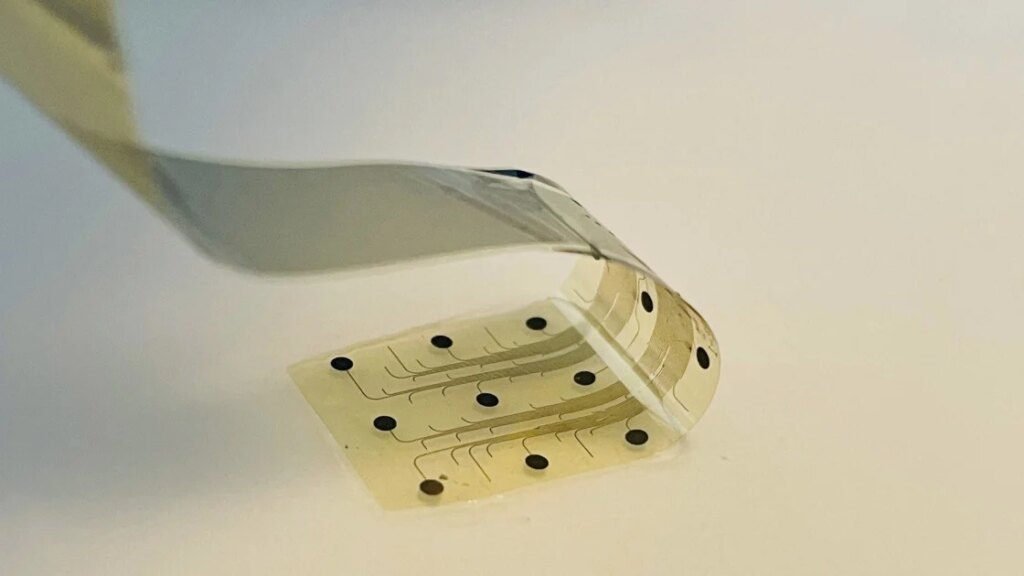Don’t miss out on our latest stories. Add PCMag as a preferred source on Google.
Microsoft is getting into the fast-evolving brain implant space through a new partnership with Inbrain, a first of its kind for the tech giant.
The goal is to create new types of therapy for patients with neurological disorders, such as Parkinson’s disease, epilepsy, and psychiatric or memory disorders. Inbrain will apply Microsoft’s agentic AI and cloud technology to its brain-computer interface (BCI), which could facilitate faster treatment based on what’s happening in the brain at that moment.
“It’s like upgrading from a remote control to a smart assistant that understands contexts, adapts, and collaborates with you,” Inbrain CEO and co-founder Carolina Aguilar tells us. It “behaves more like an operating system for the body… continuously reads what’s happening in the brain, interprets those signals using advanced AI, predicts intent or changes in neural states, and responds with the right therapy or action in real time.”
Inbrain’s BCI differs in form and function from implants made by rivals Neuralink or Synchron. The strap-like device (pictured above) lays across the brain and is the first brain implant made out of graphene, or a single layer of carbon atoms.
“This collaboration highlights the next frontier of AI,” says Clare Barclay, Microsoft’s president of enterprise and industry. Inbrain chose Microsoft as a partner for its AI models, “secure and scalable cloud infrastructure,” and experience with regulated healthcare environments.
The first step for the partnership is to integrate Microsoft’s AI models into the implant, and see if it can decode brain waves in real time. Inbrain is also finalizing the system architecture for using the tech in a clinical setting, so it can test it on patients. The company is not yet doing clinical trials in the US, though it is in the UK, and hopes to expand stateside in 2026.
Recommended by Our Editors
“Instead of bringing people to the neurologist, we aim to bring the neurologist to the people, in real time, in a personalized way, powered by AI and scalable technology,” Aguilar says. “Microsoft’s global scale and data innovation make that vision achievable.”
Microsoft is just the latest big tech exploring brain implants, though not actually manufacturing them. Apple this year built a standard Bluetooth connection for BCIs, and Synchron became the first to offer it to patients. OpenAI CEO Sam Altman is reportedly fundraising for a brain implant startup called Merge. Nvidia has been working for several years to “digitize brain waves,” extracted through a brain implant, and apply AI to the data.
Our sources tell us most tech companies see brain implants as a long-term strategic play, and their short-term goals are mostly to set up these partnerships and see how they evolve over time. No BCIs are approved by the Food and Drug Administration (FDA), and all are in varying stages of the clinical trial process, including Neuralink.
Get Our Best Stories!
Your Daily Dose of Our Top Tech News
Sign up for our What’s New Now newsletter to receive the latest news, best new products, and expert advice from the editors of PCMag.
Sign up for our What’s New Now newsletter to receive the latest news, best new products, and expert advice from the editors of PCMag.
By clicking Sign Me Up, you confirm you are 16+ and agree to our Terms of Use and Privacy Policy.
Thanks for signing up!
Your subscription has been confirmed. Keep an eye on your inbox!
About Our Expert
Emily Forlini
Senior Reporter
Experience
As a news and features writer at PCMag, I cover the biggest tech trends that shape the way we live and work. I specialize in on-the-ground reporting, uncovering stories from the people who are at the center of change—whether that’s the CEO of a high-valued startup or an everyday person taking on Big Tech. I also cover daily tech news and breaking stories, contextualizing them so you get the full picture.
I came to journalism from a previous career working in Big Tech on the West Coast. That experience gave me an up-close view of how software works and how business strategies shift over time. Now that I have my master’s in journalism from Northwestern University, I couple my insider knowledge and reporting chops to help answer the big question: Where is this all going?
Read Full Bio

